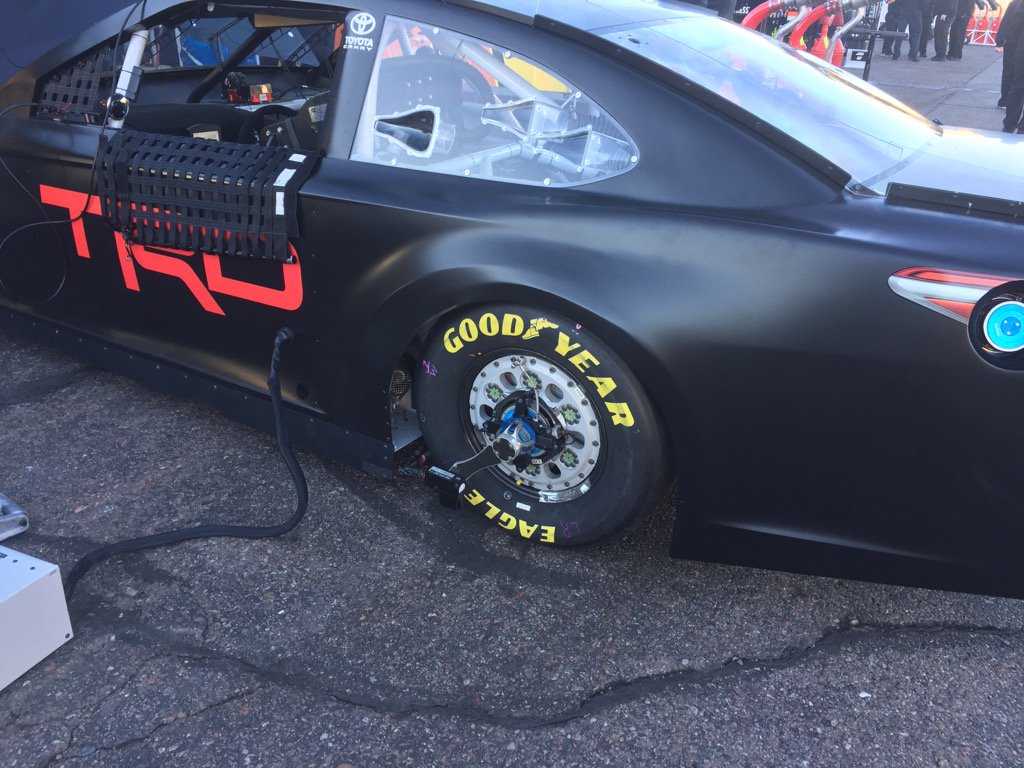- Joined
- Mar 17, 2014
- Messages
- 40,238
- Points
- 1,033
The chassis is suspended - 100% sprung weight.
It does not suspend.
It does not suspend.
The 7 poster is a dinosaur. 8 is the new 7.I don't know how many teams have a 7-post test system (it applies forces to all four corners and pulls the body down to simulate the forces of a given track), it is a tool that helps teams design or tune the suspension before testing at the track. I think the teams are setting up to minimize the suspension for aerodynamic reasons. (I wonder how minimizing the suspension affects the drivers physically).
As opposed to the Dive Bar.I'm going to guess it's the anti-dive bars
ROTFLMAOI was gonna go with aunty squat but political correctness got in the way.
The truck arms.....more specifically, manipulating the trailing arms in a way that produces more rear steer.
You understand this stuff. I’ll look forward to your input later on.
I can see that I should have been more specific. A suspension component is something that can be built in-house or purchased from a supplier. Hardware.
You can apply a formula to calculate front / rear roll couple.Roll couple. But if it has to be something you can touch i would say spindles.
Great answer. Very important components but not the most important.For a single component I'll stick with front end hardware & state its the spindles. Pin height, overall height &
KPI as it relates to ride height, camber curve, front roll center & tire scrub radius. If the steering arms need to be fixed
then Ackerman enters into the equation (toe steer). One item = a lot of stuff going on, get it right & roll the corner.
Same here. I'm getting an education. Thought I knew some things, found out I know diddly.This has been an awesome thread, I know zero about mechanical components of a car. Refreshing to read a thread like this without the arguing we have in other threads and a privilege to hear everyone’s input. I always take great value in learning about something from someone who knows more. Thanks Mr. Dive for starting this thread.
This has been an awesome thread, I know zero about mechanical components of a car. Refreshing to read a thread like this without the arguing we have in other threads and a privilege to hear everyone’s input. I always take great value in learning about something from someone who knows more. Thanks Mr. Dive for starting this thread.
Discussions such as this always impress me with how complex suspensions are in the 4-wheel world, compared to the 2-wheel arena that I'm somewhat familiar with. So many more variables with four corners involved. I still think the most important is... the setup and the simulation tools used to arrive at it. But I think Aunty has ruled those are not "components."Same here. I'm getting an education. Thought I knew some things, found out I know diddly.

11. Front anti-roll bar.How about we build a suspension part list?
1. Spring (actually half of spring if calculating "sprung weight")
2. Shocks (same as above)
3. Control arms
4. spindles
5. rear truck arms
6. track bar ( which some confuse as anti-roll bar)
7. hubs (again...for unsprung weight computations)
8. wheels
9. tires
10. ball joints
11. ?
I didn't include any of the steering components as they don't "suspend".
Way over my pay grade. LOLMechanical engineer-speak.

Nascar didn't insist on anything. When coil bind occurs aprox 4 times the force is exerted on the tire (grip). You and YOUR Toyota's should know this. Why? they used to not have the coil bind setup, they had trick shocks to defeat the ride height rule. Dropped at speed, popped back up when they didn't.

Wheel load transducer. This thing measures dynamic vertical wheel loading (not to be confused with wheel rate) during Goodyear tire / track tests (shared by all teams within each manufacturer’s group). The data derived is the most valuable information available to a race team and is fundamental to computer sims and shaker rig tests.
So ... if you know the tested vertical loading on each of the four corners of the car at a precise point at Bristol (and you do because the tested car’s GPS data runs concurrent with the transducer data) and you’re wondering if a 20 lbs/in increase in the left rear wheel rate would balance the experienced oversteer reported by the driver, make the necessary change(s) and fire up the shaker. Sometimes it runs 2 shifts a day.
It isn’t difficult to understand why on-track testing is severely limited.
Geez, this sport is getting more hi-tech all the time.
A big number with a whole lot of zeros after it, would be my guess.
Probably 250K, give or take.Aunty, how much would you guess that that car is worth?
Probably 250K, give or take.
Without 4 of those things clamped to the wheels.
